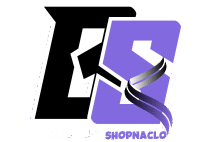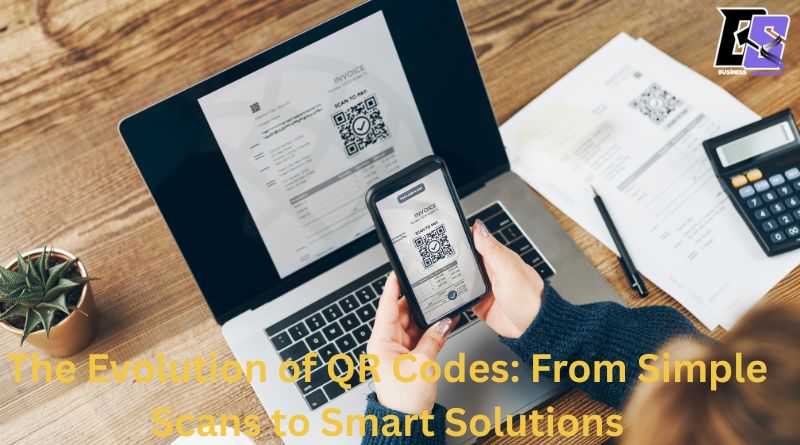The Evolution of QR Codes: From Simple Scans to Smart Solutions
Hey there!
Have you noticed how those little black-and-white square patterns have popped up just about everywhere? QR codes used to be those quirky add-ons you’d see on business cards or restaurant menus. But now, they’re having a serious moment—and they’re not going away anytime soon.
I remember the first time I scanned a QR code; it felt almost magical. Point, scan, and suddenly a new world of information opens up on your phone. But what’s even more fascinating is how these humble codes have evolved from basic scans to smart, dynamic solutions that are transforming how we interact, learn, and do business.
Let’s take a closer look at how QR codes have journeyed from novelty to necessity—and how you can harness them in ways you might not have imagined.
A Brief History: From Static to Smart
QR codes (short for “Quick Response” codes) were first developed in Japan in the 1990s as a way to track parts in the automotive industry. Back then, no one could have guessed they’d become such a ubiquitous part of daily life. For years, they were mostly static—simple links to websites or PDF downloads. Cool, but not exactly groundbreaking.
Then came the pandemic. Suddenly, QR codes became essential for everything from contactless menus to vaccination records. It was like the entire world rediscovered how convenient these little squares could be.
But the real magic is happening now: QR codes are no longer static or boring. They’re dynamic, customizable, and smart—opening doors to interactive learning, seamless payments, and so much more.
From “Just a Link” to Interactive Experiences
Gone are the days when a QR code was just a boring bridge to a website. Today, QR codes are becoming interactive touchpoints that enhance learning and engagement.
For example, in classrooms, educators are embedding QR codes in textbooks and handouts to link students to video tutorials, quizzes, or real-time updates. Imagine flipping to a tricky math concept in your textbook and scanning a code that instantly takes you to a step-by-step video explanation. Suddenly, learning becomes dynamic and tailored to different learning styles.
Or think about art museums—some are using QR codes to transform static exhibits into rich multimedia experiences. Scan a code next to a painting, and you might hear an audio tour or watch a mini-documentary about the artist’s life. It’s like having a personal tour guide in your pocket!
The Power of Personalization
One of the coolest trends in QR codes today is personalization. Using a QR code generator, anyone can create customized codes that reflect their brand, style, or personality.
Let’s say you’re a small business owner. Rather than a generic black-and-white square, you can create a QR code that incorporates your brand colors or logo. It’s a subtle but powerful way to build trust and make your interactions feel more human.
I recently saw a coffee shop that printed QR codes on their cup sleeves—each one led to a different story about their coffee farmers, creating a more personal, meaningful connection with every sip. That’s what today’s QR codes are all about: blending technology with authenticity.
Making Learning More Accessible
Beyond marketing, QR codes are making learning more accessible and inclusive. For example, libraries are placing QR codes on book spines to link directly to digital resources or audiobook versions. That way, anyone—regardless of reading preferences or abilities—can access the content in the way that suits them best.
In language learning, QR codes in textbooks can connect students to pronunciation guides or cultural videos, making it easier to immerse yourself in a new language. It’s a simple shift, but it makes a world of difference.
How Startups and Small Businesses are Innovating
It’s not just the big players who are reaping the benefits of QR code technology. Startups and small businesses are using QR codes in surprisingly creative ways:
- Pop-up shops are using QR codes for instant checkout, skipping long lines and streamlining the customer experience.
- Local artists are putting QR codes on their business cards or portfolios to instantly link to their online galleries or social media profiles.
- Farmers’ markets are even using QR codes to share recipes and cooking tips for fresh produce, turning shopping into an educational experience.
What I love about these examples is that they’re rooted in real human needs—convenience, curiosity, connection. The technology is there, but it’s always in service of making life easier and more meaningful.
Tips for Using QR Codes in Your Own Life
So, how can you take these insights and use QR codes in your daily life or business? Here are a few practical ideas to get you started:
✅ Make your next presentation pop: Instead of cluttering your slides with links, add a QR code that your audience can scan to access resources or sign up for your newsletter.
✅ Level up your product packaging: Print a QR code on your packaging to share a video about how your product is made or a behind-the-scenes peek at your process.
✅ Add a personal touch to thank-you notes: Include a QR code that leads to a personalized thank-you video or a discount code for a future purchase.
✅ Keep it updated: One of the best things about dynamic QR codes is that you can change the destination without reprinting. If your link changes, no worries—just update it behind the scenes.
The Human Touch: Blending Tech and Authenticity
Here’s the thing: at the end of the day, QR codes are just a tool. What makes them truly powerful is how they connect us—bridging the gap between physical and digital, between curiosity and discovery.
Think about the last time you scanned a QR code. It probably felt effortless—like the technology was invisible. That’s the magic. When used thoughtfully, QR codes fade into the background, letting the experience itself shine.
And that’s the real lesson for all of us: whether you’re an educator, a business owner, or just a curious learner, technology should never feel like a barrier. It should be a bridge—one that makes our lives richer, easier, and a little more delightful.
Looking Ahead: QR Codes and Beyond
So, what’s next for QR codes? Expect even smarter integrations, from linking to augmented reality experiences to triggering instant payments with a single scan. The possibilities are only expanding.
But here’s my favorite part: QR codes remind us that the best technology is the kind that feels personal and human. It’s not about the code itself—it’s about what it unlocks for us.
So, the next time you see one of those familiar black-and-white squares, take a moment to appreciate how far they’ve come. Because behind that simple scan is a world of innovation, learning, and connection—waiting for you to explore.
Let’s Keep the Conversation Going
I’d love to hear how you’re using QR codes in your own life or work. Are you creating interactive experiences for your customers? Using them to learn something new? Or maybe you’ve got a creative idea brewing? Let me know—I’m all ears!
Here’s to embracing smart, human-centered tech—and the endless possibilities that come with it.




